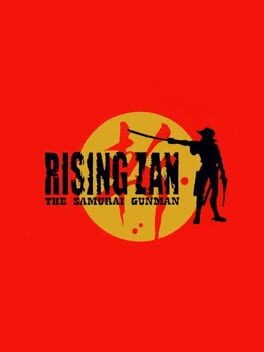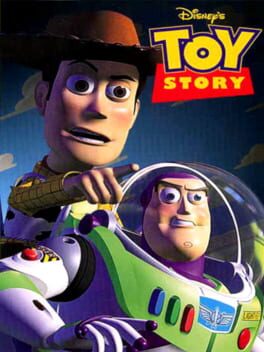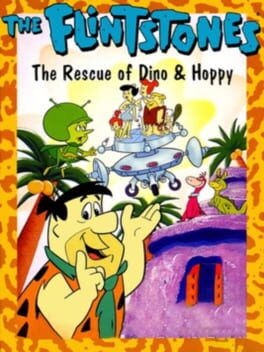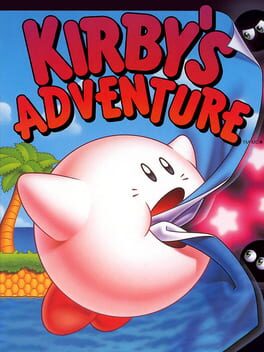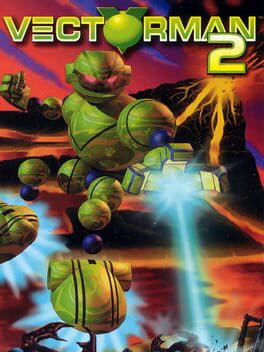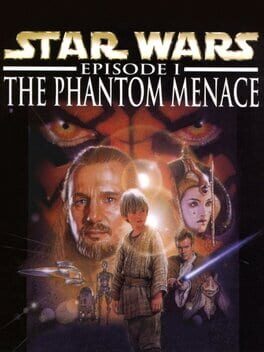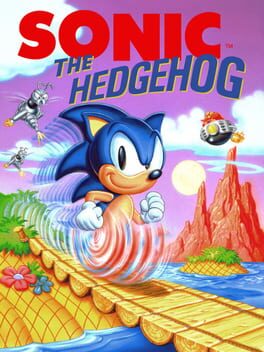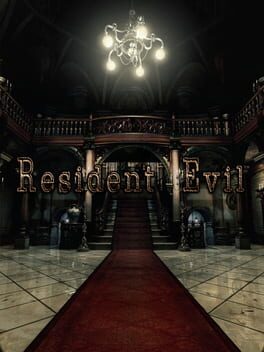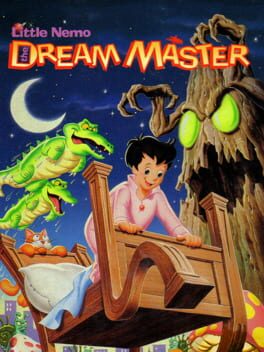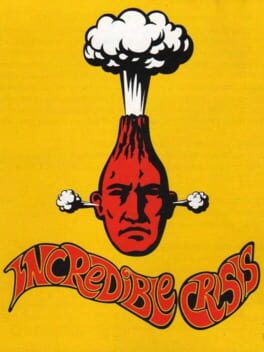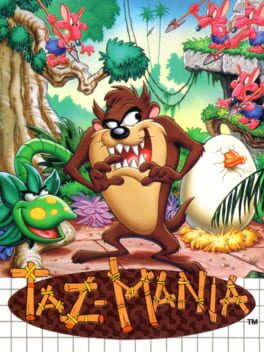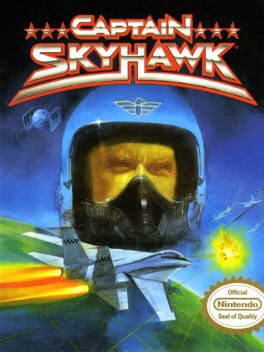TonyBlue87
BACKER
1995
1993
1997
An amazingly weird action game that is emblematic of the Wild West of game development of the 90s. Super inventive art and game design that almost makes it seem like a fake game made for a TV show. Inventive elements like the sniper mode make it an incredibly unique experience, and while it may be a little rough around the edges by modern standards, there's quite literally nothing like it.
A fun on-rails shooter when it stays in the shooting levels. The vehicle levels, however, are almost fully broken and really bring the quality down. There's an impressive amount of production quality in the FMV and overall it's fun (on Easy), but you'll struggle to keep a smile on your face as the Millennium Falcon slams into the side of a cave for no reason for the hundredth time.
1996
A slightly disappointing follow-up to the original that suffers from Sequel Syndrome: interesting changes to level mechanics but then repeating them too many times to pad out the length. The music and visuals remain top-notch, but too many of the levels are stretched out with busy work and some sections (particularly the final boss) are cheap. Still recommended overall.
As broken and ridiculous as its source material. In some ways it's an interesting approach to gameplay with dialogue trees and a fairly impressive amount of voice acting, but in another more accurate way it's an extremely frustrating game with lousy combat, abysmal escort missions, and an overall level of jank that leads to hilarious glitches like Qui-Gon leaping through a floor and plummeting to the core of Tatooine or Obi-Wan dying in a cutscene by getting trapped in the laser walls while trying to reach Darth Maul. A part of me will always love it for being so weird and unique, but I have no reason to ever play it again.
1991
A rarely talked about adventure for the blue blur but a solid platformer that deserves more attention. Much more straightforward and simple than the Genesis games, which works to its advantage, with decently tight controls. Runs into a few cheap deaths/leap of faith moments in its final stages, but this remains a favorite of mine from the stellar 2D Sonic era.
2014
An amazing remake and a solid port that generally stands the test of time. The voice acting has aged to the point where now it's just as cheesy and ridiculous as the original, but that lends a sense of goofy fun to the experience. The fixed camera angles make jump scares just as effective as they were when first released, and the tank controls are surprisingly playable from start to finish (though the modern analog controls are a welcome addition). Unfortunately, the overall gameplay style hasn't aged particularly well, which is mostly running back and forth from item boxes to hopefully take the right key item with you while juggling an extremely limited inventory space. It just adds a level of tedium that feels like a point n' click game with extra steps. At the end of the day, however, it's still a fun and effective survival horror (puzzle) game, and definitely deserves its lifetime status as one of the greats of the genre.
1991
Super Castlevania IV is a solid entry in the traditional whip-slingin' series. A few elements drag it down, but ultimately it delivers on the classic Castlevania experience. The major improvement is the inclusion of the 8-way whip attack. You're never short of options to deal with enemy positions, and you're gonna need them as this game absolutely loves to put enemies above, below, and all around you. Unfortunately, your whip can't save you from a number of vertical levels where the moment the ground goes off-screen everything turns into a death pit. Add in those enemy positions I mentioned and suddenly moments of the game feel incredibly cheap. Dodging flying axes while hanging from an auto-scrolling ring is not exactly the pinnacle of a good time. With checkpoints happening every 2 to 3 screen transitions, you're very likely going to end up in a cycle of replaying very long and tedious segments just to get back to the point where you got your last game over from phasing through a staircase you didn't know was beneath you.
On the other end of the difficulty spectrum are the bosses. While the levels can get very frustrating and require patience and precision, nearly every boss can just be tanked and wailed on until they explode. Sometimes bosses take up to 3 hits just for one pip of their health bar to drop, but if you're facing them with full health yourself it doesn't really matter as long as you stay on the offensive. In some ways it's a decent trade-off for the difficulty of the levels and platforming, but I personally wish that was reversed.
The music is also an uneven package. The title screen and opening level do an amazing job setting the tone for an eerie and exciting adventure, and the final moments of the game bring back the best Castlevania tracks in the series. The entire middle portion, however, is a sort of strange miasma of tonal drones and random noodling. Most tracks have no discernable melody. It's like a Dracula-themed jazz lounge show and is sadly unremarkable.
While it doesn't hit the best highs of the series, Super Castlvania IV is still fun and exciting and does feel like a proper adventure (the level map transitions are really terrific at chronicling your journey). Some of the level design is a straight bummer, and bosses offer very little challenge, but infinite continues and passwords keep you giving it "one more try." And when Simon's theme kicks in as you get down to the last moments of Dracula's health bar... damn does it feel good to be a Belmont.
On the other end of the difficulty spectrum are the bosses. While the levels can get very frustrating and require patience and precision, nearly every boss can just be tanked and wailed on until they explode. Sometimes bosses take up to 3 hits just for one pip of their health bar to drop, but if you're facing them with full health yourself it doesn't really matter as long as you stay on the offensive. In some ways it's a decent trade-off for the difficulty of the levels and platforming, but I personally wish that was reversed.
The music is also an uneven package. The title screen and opening level do an amazing job setting the tone for an eerie and exciting adventure, and the final moments of the game bring back the best Castlevania tracks in the series. The entire middle portion, however, is a sort of strange miasma of tonal drones and random noodling. Most tracks have no discernable melody. It's like a Dracula-themed jazz lounge show and is sadly unremarkable.
While it doesn't hit the best highs of the series, Super Castlvania IV is still fun and exciting and does feel like a proper adventure (the level map transitions are really terrific at chronicling your journey). Some of the level design is a straight bummer, and bosses offer very little challenge, but infinite continues and passwords keep you giving it "one more try." And when Simon's theme kicks in as you get down to the last moments of Dracula's health bar... damn does it feel good to be a Belmont.
Little Nemo joins the likes of Rayman and Ecco the Dolphin of "cute game for kids that's actually painfully difficult." The first level lures you into a false sense of security with its charming music and cute candy-throwing mechanic. Then the second level smacks you with a dead end that can only be bypassed by climbing off screen. There's no indication that you can do this, and the game only continues to obfuscate from there. Level 3 is a horribly punishing auto-scroller, Level 5 is a laborious, checkpoint-free shuffle back and forth across the entire level to swap animal abilities, and all the while Nemo has no means to defend himself from the infinitely respawing enemies. When the last 2 levels finally give you a direct attack, 1. it's never explained that you can charge up a projectile attack that is mandatory for beating the bosses, and 2. you spend most of the time still using animal abilities so you can't make use of it anyway. The final level is an absolute marathon of precision platforming and 3 boss fights, which is a ridiculous amount of ground to cover should you game over because a crocodile jumped out of the water and knocked you one pixel up into a falling spike ceiling.
Little Nemo has terrific music and great art, but that's about where the fun ends. It's an incredibly frustrating game with a difficulty spike as ridiculous as the spikes that randomly come crashing down on you as you dodge flying squirrels on a speeding train. It's a very odd and uneven experience from Capcom, and maybe it should've stayed in Slumberland.
Little Nemo has terrific music and great art, but that's about where the fun ends. It's an incredibly frustrating game with a difficulty spike as ridiculous as the spikes that randomly come crashing down on you as you dodge flying squirrels on a speeding train. It's a very odd and uneven experience from Capcom, and maybe it should've stayed in Slumberland.
1999
The power of ska compels you to power through a wacky cast of characters stumbling their way through a completely ridiculous plot of the worst day of their lives. This game is carried primarily by its charm and humor as you mash your way through a sort of Warioware-meets-Rhythm-Heaven mini-game adventure over the course of about an hour. Each game is generally straightforward, only requiring one or two inputs from start to finish, but unfortunately things get bogged down by some of that classic PS1 jank. Dodging obstacles that appear 3 feet ahead of you because of the draw distance, a stealth game with a margin of error so tiny that winning feels like a glitch, and a "save the sinking boat" game that goes on for way too long and for some reason repeats THREE times (the developers even call themselves out by labeling it "last time, we swear," so they knew it was a bad idea) all work against this game being a true classic. Add in the sheer amount of button mashing that is required in multiple games and you end up shaking the pain out of your hand during loading screens asking, "Why would they make you do that?!"
Overall, it's still a bit of a hidden gem with a lot of spirit and a terrific soundtrack. It's just a shame that a couple of poor design decisions stop it just short of actually being "incredible."
Overall, it's still a bit of a hidden gem with a lot of spirit and a terrific soundtrack. It's just a shame that a couple of poor design decisions stop it just short of actually being "incredible."
1992
In 1992, some gaming company managed to squeeze an actual garbage fire onto a Game Gear cartridge. The framerate of a first grader's flip book meets the sound of tying catnip to a cat's face and throwing it at a piano to present 9 painful levels (mostly auto-scrollers) featuring everyone's 10th favorite Looney Tunes character. Taz-Mania is a game with zero redeeming qualities, and is best left forgotten, much like how the developers forgot to add "fun" to their video game for children.
1990
Captain Skyhawk is a fast-paced, arcade-style shooter that offers a short, solid challenge with only a few frustrating bits dragging it down from top speed. The majority of the game is made up of generally standard vertical shoot-em-up levels usually ending in a "boss fight" against a base. You have a significant amount of horizontal movement available, which makes for much wider levels than typically found in the genre, and you'll need the space to dodge enemy gunfire while avoiding slamming into the environment.
There are a number of frustrating moments in these sections: levels that require you to drop supplies to allies by aiming for a relatively small hole in the ground force you to fly through the entire level again before getting another chance, enemy fire is sometimes invisible (possibly due to the NES sprite limit) and leaves you questioning what even hit you, one level features a blinding bright pink background, and a later level features exploding mines that seem to hit you completely arbitrarily.
Fortunately, these segments are broken up by After Burner-style levels where shooting down fighters awards credits that can be used to upgrade your weapons. Each series of levels ends with docking with your space station (which is just cool), and deciding where to spend your cash. The only upgrade that really matters, though, is your standard cannon which when fully upgraded becomes an endless stream of bullets. From there, it's back down to another set of vertical levels.
At only 9 "missions," the game ends juuuuuust before it overstays its welcome (and your reward is a misspelled congrats screen). Exploding for seemingly no reason gets frustrating at times, but overall Captain Skyhawk is a fun shoot-em-up that can be beaten in a single sitting with a little patience and a side of white-knuckled panic.
There are a number of frustrating moments in these sections: levels that require you to drop supplies to allies by aiming for a relatively small hole in the ground force you to fly through the entire level again before getting another chance, enemy fire is sometimes invisible (possibly due to the NES sprite limit) and leaves you questioning what even hit you, one level features a blinding bright pink background, and a later level features exploding mines that seem to hit you completely arbitrarily.
Fortunately, these segments are broken up by After Burner-style levels where shooting down fighters awards credits that can be used to upgrade your weapons. Each series of levels ends with docking with your space station (which is just cool), and deciding where to spend your cash. The only upgrade that really matters, though, is your standard cannon which when fully upgraded becomes an endless stream of bullets. From there, it's back down to another set of vertical levels.
At only 9 "missions," the game ends juuuuuust before it overstays its welcome (and your reward is a misspelled congrats screen). Exploding for seemingly no reason gets frustrating at times, but overall Captain Skyhawk is a fun shoot-em-up that can be beaten in a single sitting with a little patience and a side of white-knuckled panic.
